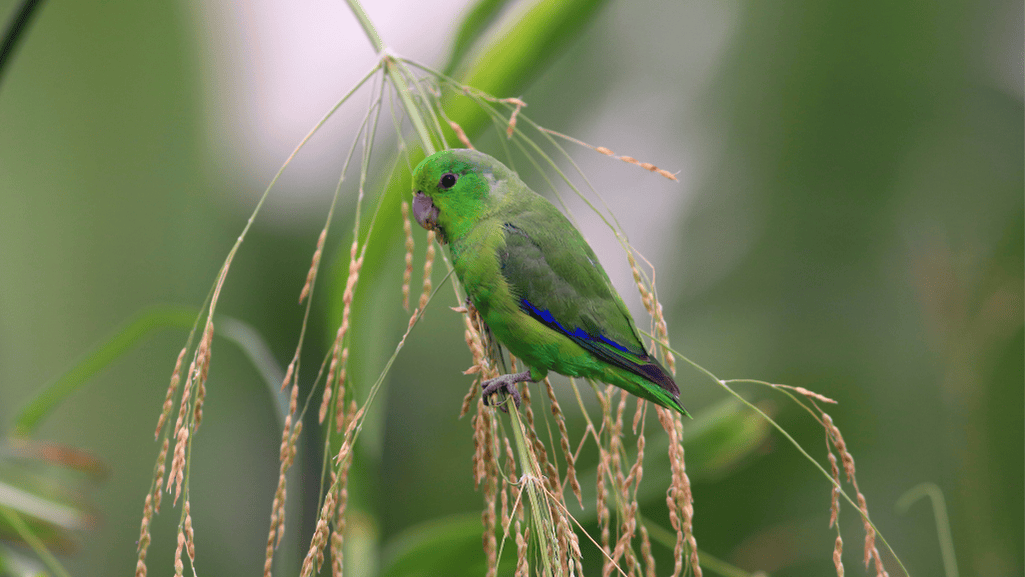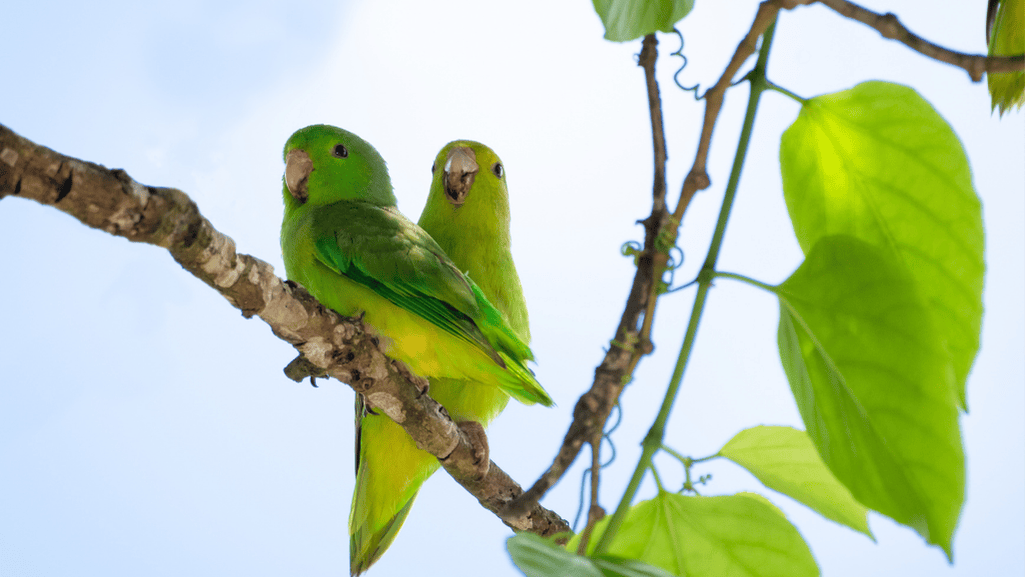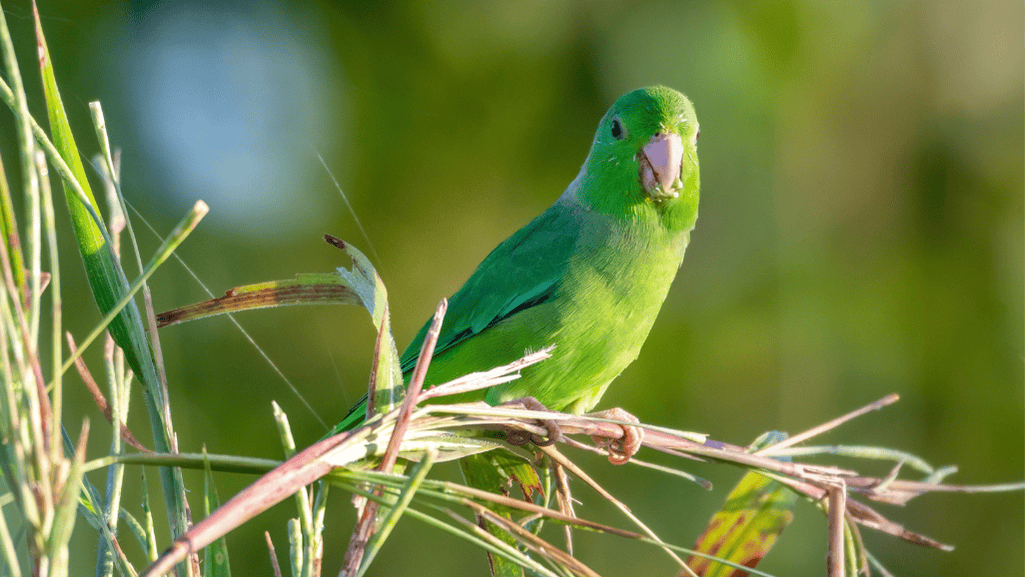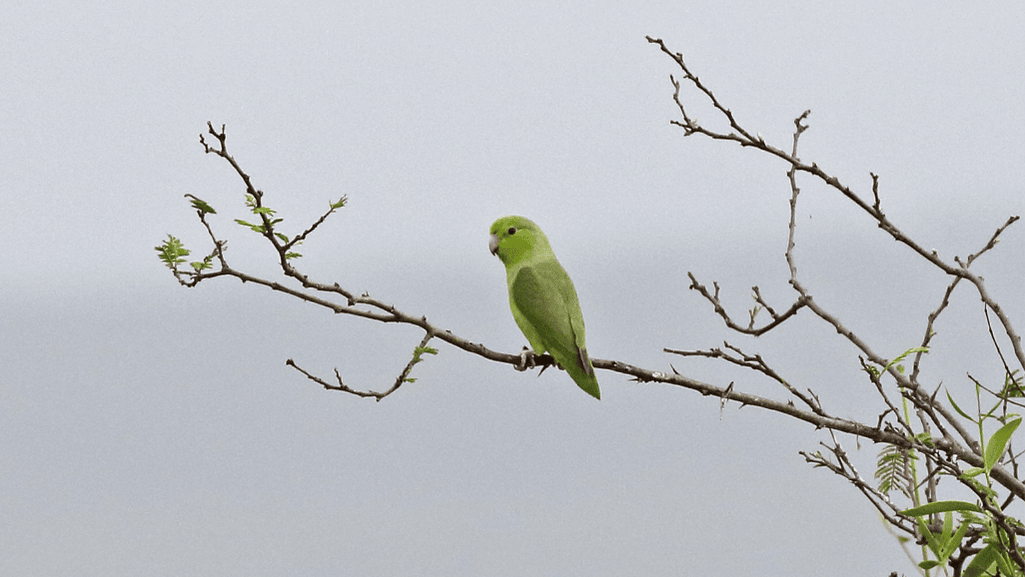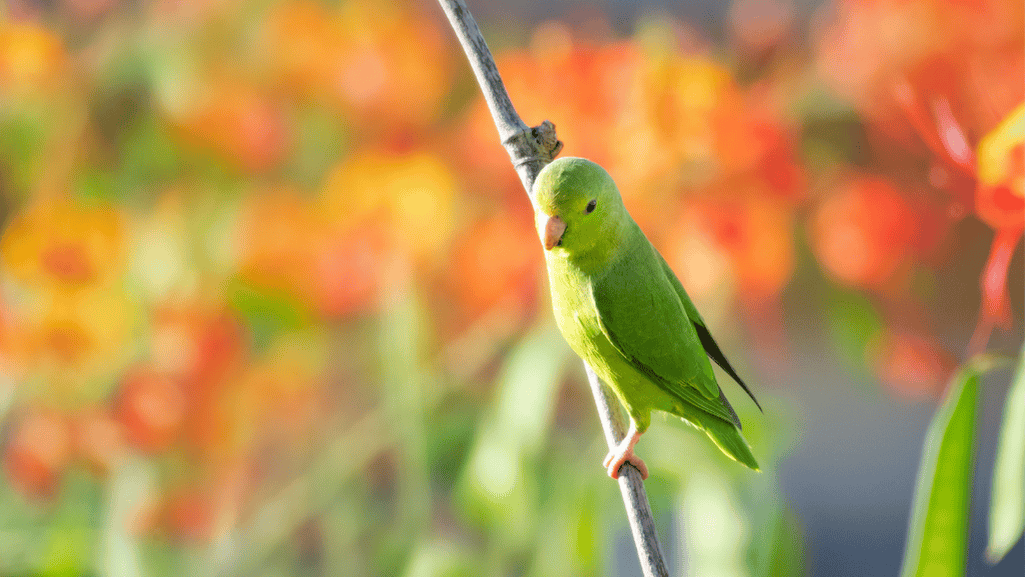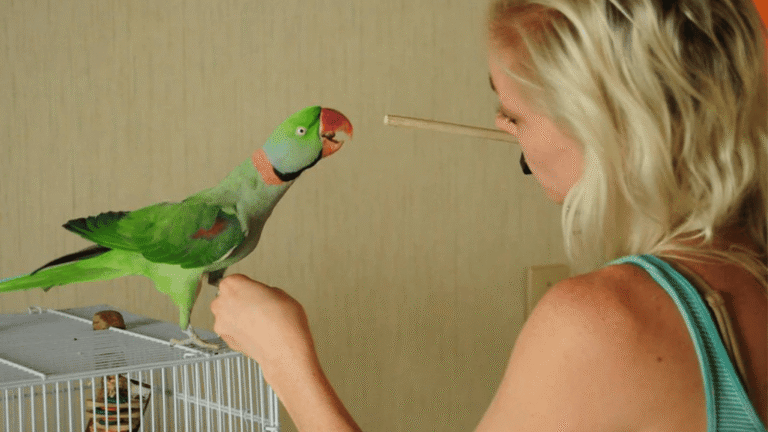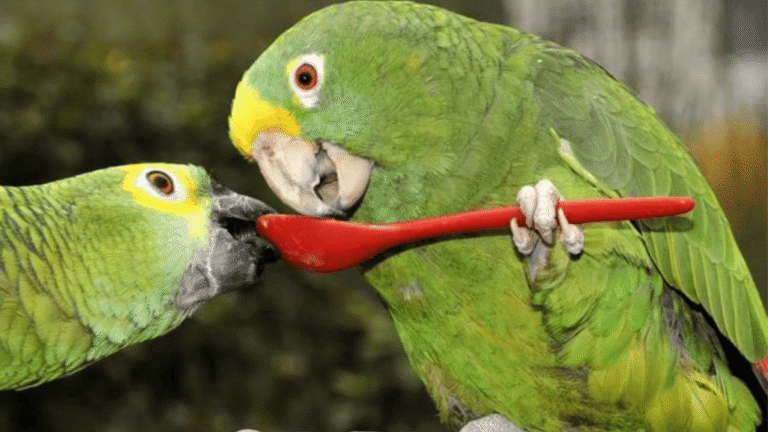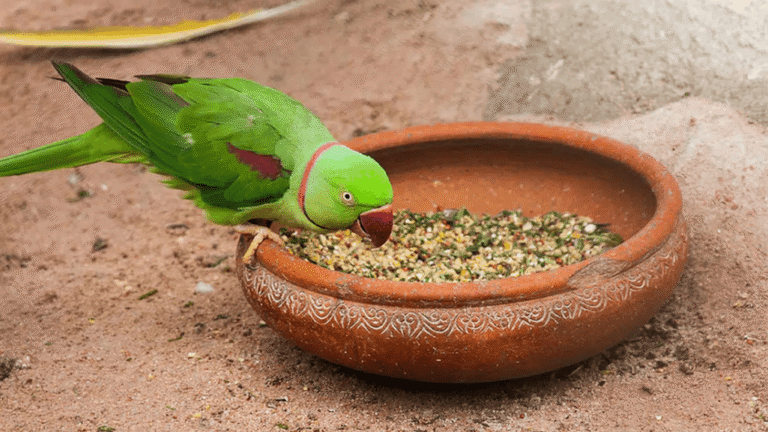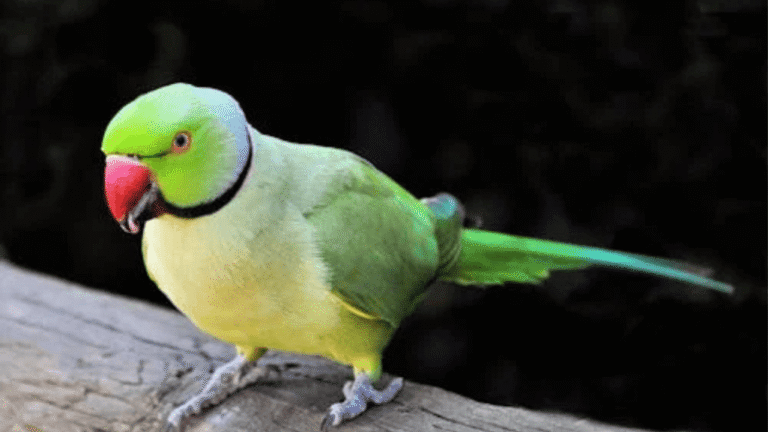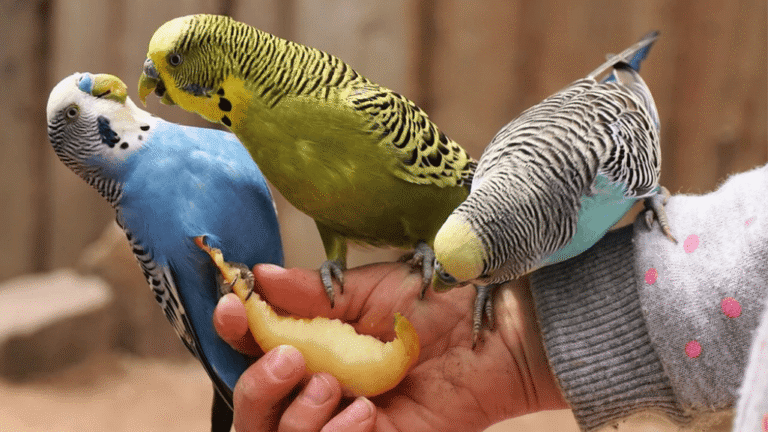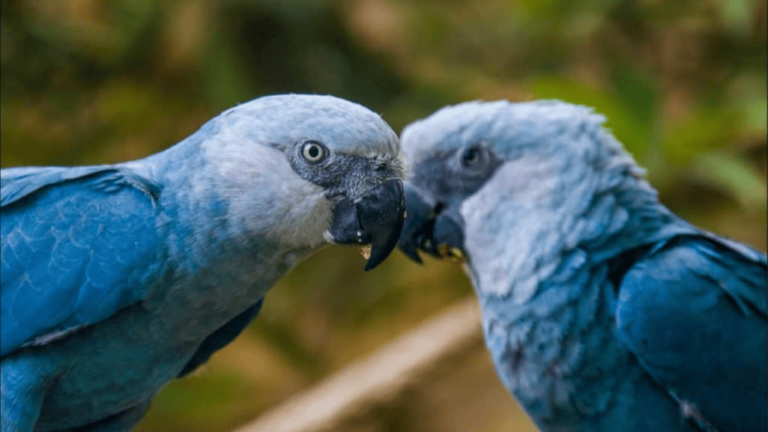Explore the magical world of Blue Winged Parrotlets, the smallest parrots. They are tiny, yet full of life and love. These birds are known for their bright colors and lively spirits.
Blue Winged Parrotlets include several types, like the Pacific and Mexican parrotlets. Each type has its own special colors and traits. For example, male celestial parrotlets have striking blue wings, while Pacific parrotlets come in many colors.
These small birds are loved as pets because of their fun and loving nature. They are not the best at talking, but their playful actions and deep connections with people make up for it.
Key Takeaways:
- Blue Winged Parrotlets are the smallest parrots, measuring around 5 inches in length.
- These miniature parrots come in various subspecies and color mutations.
- Blue Winged Parrotlets are known for their spunky personalities and strong bonds with their owners.
- Pacific parrotlets and green-rumped parrotlets are the most common subspecies available as pets.
- With a lifespan of up to 20 years, Blue Winged Parrotlets make long-term, affectionate companions.
Introduction to the Blue Winged Parrotlet
The Blue Winged Parrotlet, also known as the Cobalt-rumped Parrotlet (Forpus xanthopterygius), is a vibrant bird. It has become a popular pet in recent years. These birds are known for their bright colors, lively nature, and easy care. They are perfect for both new and experienced bird lovers.
These parrots come from the lowlands of northeastern Argentina, Paraguay, and Brazil. They live in dry woodlands, palm groves, and savannas. They are small, about 12 cm (4.7 in) long and weigh 28 g (1.0 oz). This makes them great for apartment living and forming close bonds with people.
For pet bird care, Blue Winged Parrotlets need a balanced diet. This includes high-quality pellets, fresh fruits and veggies, and treats now and then. They also need a big cage with lots of perches, toys, and things to do. Regular play, training, and socializing are important for their happiness and health.
While Blue Winged Parrotlets may not be the most talented talkers in the parrot world, they more than make up for it with their endearing personalities and entertaining antics.
It’s important to understand parrotlet behavior to be a good owner. These birds love attention and interaction. They can form strong bonds with their owners. But, they can be feisty and may not get along with other birds. So, it’s best to keep them as single pets or in pairs.
To keep parrotlets healthy, regular vet visits are key. They also need a clean home and watchful care. With a good diet, plenty of exercise, mental challenges, and love, Blue Winged Parrotlet owners can enjoy their company for 10-20 years or more.
Origin and History of the Blue Winged Parrotlet
The Blue Winged Parrotlet is a fascinating little bird with a rich history. It has a wide geographic range. These charming south american parrots have captured the hearts of bird enthusiasts for centuries.
Their journey from the wilds of the Amazon Basin to the homes of loving pet owners is a tale worth telling.
Native Habitat and Range
The Blue Winged Parrotlet is native to central and northern South America. The largest populations are found in the Amazon Basin. These resilient little birds have adapted to thrive in various habitats.
They prefer lowland areas and are rarely found at altitudes exceeding 3,900 feet above sea level.
Despite their preference for drier regions, Blue Winged Parrotlets are widespread and locally common throughout their range. Their adaptability has allowed them to maintain stable wild populations, even as their popularity as pets has grown over the years.
First Introduction to Europe
The Blue Winged Parrotlet’s journey to becoming a beloved companion animal began over 500 years ago. They were among the first parrot species brought to Europe from South America in the early 1500s. These vibrant little birds quickly captured the attention of European bird enthusiasts.
“The Blue Winged Parrotlet’s introduction to Europe marked the beginning of a new era in aviculture, as bird lovers across the continent eagerly sought to add these charming creatures to their collections.” – Dr. Amelia Rodrigues, Ornithologist
As the demand for Blue Winged Parrotlets grew, so did the efforts to protect their wild habitats. Today, a significant portion of their native range is under protection. This ensures that these delightful birds will continue to thrive both in the wild and as cherished companions.
| Species | Origin | Status in the Wild |
|---|---|---|
| Blue Winged Parrotlet | Mexico and South America | Widespread and locally common |
| Spectacled Parrotlet | South America | Common, perhaps increasing |
| Green-rumped Parrotlet | South America (introduced to Caribbean) | Common or locally common |
| Mexican Parrotlet | Mexico | Fairly common, specially protected as an endemic species |
Physical Characteristics of the Blue Winged Parrotlet
The Blue Winged Parrotlet is a stunning small parrot with vibrant colors. It’s one of the smallest parrots, reaching only 12 cm (4.7 in) in length and weighing about 28 g (1.0 oz). Despite their small size, they have a colorful look that impresses everyone.
Size and Weight
Blue Winged Parrotlets are among the smallest pet parrots, being less than six inches long. They are smaller than parakeets and have shorter tails. Their small size makes them perfect for those wanting a small, easy-to-care-for bird.
Plumage and Coloration
The Blue Winged Parrotlet’s plumage is breathtaking. They have a vibrant olive green body and a long, elegant green tail. Their faces and wings are a stunning mix of green and yellow, making them stand out.
The males have striking blue patches on their wings, which gives them their name. These blue markings are unique to males and add to their beauty.
Sexual Dimorphism
Male and female Blue Winged Parrotlets look similar but have some differences. Males have blue patches on their wings, while females have green and yellow faces and wings. This makes it easy to tell them apart.
Both sexes have bright olive green bodies and long green tails. Their eyes are surrounded by bright green feathers. Their small, pale grey bills are perfect for their diet.
| Characteristic | Male | Female |
|---|---|---|
| Body length | 12 cm (4.7 in) | 12 cm (4.7 in) |
| Weight | 28 g (1.0 oz) | 28 g (1.0 oz) |
| Wing coloration | Blue patches | Green and yellow |
| Body color | Olive green | Olive green |
| Tail color | Long, green | Long, green |
| Eye surrounding | Bright green feathering | Bright green feathering |
| Bill color | Small, pale grey | Small, pale grey |
The Blue Winged Parrotlet’s size, color, and beauty make it a wonderful pet. Whether you love the males’ blue wings or the females’ green and yellow, these birds bring joy and companionship.
Personality and Temperament
Blue Winged Parrotlets are among the most endearing parrot species. They are known for their vibrant personalities and affectionate nature. These tiny feathered friends have captured the hearts of bird enthusiasts worldwide with their charming dispositions and playful antics.
Social and Affectionate Nature
Blue Winged Parrotlets have a strong desire for social interaction and bonding with their owners. They thrive on attention and affection, often seeking out their favorite person for cuddles and playtime. They are not content to sit alone in a cage all day, requiring several hours of daily interaction to maintain their mental and emotional well-being.
“My Blue Winged Parrotlet, Alita, is an absolute joy to be around. She’s always eager to spend time with me, whether it’s playing with her toys or simply perching on my shoulder while I work. Her affectionate nature never fails to brighten my day.”
Parrotlets can form incredibly strong bonds with their owners, as demonstrated by Alita, a 2-year-old Bronze Winged Parrotlet. Alita’s owner describes her as affectionate, enjoying being talked to, and loving scritches. However, like many parrotlets, Alita can display a feisty and stubborn parrotlet temperament at times, showing determination to get her way.
Playful and Energetic Disposition
In addition to their loving nature, Blue Winged Parrotlets are known for their playful and energetic personalities. These tiny birds are always on the lookout for fun and excitement, whether it’s exploring their surroundings, playing with toys, or engaging in interactive games with their owners. Their curiosity and intelligence make them a delight to watch and interact with.
While Blue Winged Parrotlets are generally adaptable and sweet-natured, they can exhibit a range of behaviors and parrotlet sounds depending on their mood and environment. For example, Alita engages in a morning ritual of fanning her tail, fluffing her feathers, and barking at toys before deciding to leave her sleep cage. She also produces quiet squeaks, murmurs, beeps, and purrs, occasionally attempting to say words.
| Behavior | Description |
|---|---|
| Bedtime | Barks in displeasure when put in sleep cage; initially happy but upset when cage is covered |
| Morning | Fans tail, fluffs feathers, and barks at toys; engages in a ritual before leaving sleep cage |
| Vocalizations | Produces quiet squeaks, murmurs, beeps, purrs; sometimes attempts to say words |
| New Objects | Initially quiet around new objects; may panic but quickly adapts |
To ensure a happy and well-adjusted Blue Winged Parrotlet, owners should be prepared to devote ample time to social interaction and playtime. Experts recommend dedicating three to four hours per day to engaging with these feathered friends to maintain their mental and physical well-being in captivity. With proper care and attention, Blue Winged Parrotlets can live up to 20 years or more, making them a long-term commitment that rewards their owners with unconditional love and companionship.
Blue Winged Parrotlet as a Pet
Looking for a small parrot that brings color, joy, and love into your life? The Blue Winged Parrotlet is perfect. These small birds have big personalities, making them great for apartment living or small homes.
Suitability for Apartment Living
Blue Winged Parrotlets are perfect for apartments. They are small and quiet, unlike bigger parrots. They weigh about one ounce and are 4 1/2 to 5 1/2 inches long. They need a cage of at least 18 inches square.
These birds are quiet, which is good for apartment living. They can learn to say up to 15 words. This adds a fun touch to your home.
Interaction and Attention Requirements
Don’t underestimate the Blue Winged Parrotlet’s personality. They need lots of attention and interaction. Daily handling and playtime outside their cage is essential. Without enough attention, they can become moody or aggressive.
It’s best to have just one Blue Winged Parrotlet for a strong bond. Two can bond with each other, but they might not interact as much with you. If you’re willing to spend time with multiple birds, a pair can be very entertaining.
| Characteristic | Description |
|---|---|
| Adult Size | 4 1/2 to 5 1/2 inches, weighing about one ounce |
| Life Expectancy | 20 to 30 years in captivity |
| Minimum Cage Size | 18 inches square |
| Vocabulary | Can reach 10 to 15 words |
| Diet Composition | Fruits and veggies 50%, pellets 35%, seeds 15% |
| Average Cost to Purchase | $200 to $400 |
Give your Blue Winged Parrotlet a balanced diet, fun toys, and lots of love. You’ll get a loyal, loving, and entertaining friend for years.
Housing and Care Requirements
Creating the perfect parrotlet habitat is key for their health and happiness. When setting up your parrotlet’s home, think about the cage size, diet, and exercise. A comfortable and stimulating environment will help your feathered friend thrive and enjoy life as your companion.
Cage Size and Setup
Parrotlets need spacious bird housing for their active lifestyle. A cage for parakeets or lovebirds, at least 30″ x 18″, is perfect. Make sure the bar spacing is no more than 1/2″ (1.3 cm) to prevent escapes. Add perches, ladders, and ropes for climbing and playing.
Include food and water dishes, and a variety of shreddable bird toys. These toys should be made from natural materials to keep your parrotlet’s mind active.
Diet and Nutrition
A balanced diet is vital for your parrotlet’s health. According to parrotlet care guidelines, their diet should include high-quality commercial pellets (50-75%), fresh fruits and vegetables, and occasional seed mix. Offer a variety of nutrient-rich foods, such as:
- Dark, leafy greens
- Carrots
- Sweet potatoes
- Berries
- Sprouted seeds
- Occasional treats like cooked eggs or pasta
Always ensure fresh, clean water is available for your small parrot pet.
Exercise and Enrichment
Parrotlets are active and intelligent birds that need daily exercise and mental stimulation. Provide them with out-of-cage time to explore and interact with you. Offer a variety of toys, including:
- Foraging toys
- Puzzle toys
- Chewing toys
- Swings
- Mirrors
Rotate toys regularly to keep your parrotlet interested and engaged. Training sessions and social interaction are also key to preventing behavioral issues like feather plucking and aggression.
| Species | Adult Size | Lifespan | Noise Level |
|---|---|---|---|
| Pacific Parrotlet | Up to 14cm/5.5″ and 25-30 grams | 15+ years | Low (for a parrot) |
| Green-Rumped Parrotlet | Smaller than Pacific Parrotlet | 8-12 years, up to 20 in captivity | Low |
By providing a spacious cage, balanced diet, and plenty of enrichment opportunities, you’ll create a nurturing environment. This environment supports your parrotlet’s overall health and happiness.
Health and Lifespan
Blue Winged Parrotlets can live up to 20 years with the right care. They are generally healthy but can face health issues. These problems often stem from a bad diet, stress, loneliness, and poor living conditions.
To keep your parrotlet healthy, give them a balanced diet. They should eat:
- 25% to 45% pellets
- 15% to 20% low-fat seed mix
- 30% to 50% fresh veggies, legumes, grains, and fruits
Good fruits and veggies for parrotlets include apples, pears, oranges, carrots, and green leaves. Avoid harmful foods like chocolate, avocado, and salt. Also, keep them away from toxic plants and certain wood shavings.
It’s important to take your parrotlet to the vet every 6-12 months. This helps catch health problems early. Signs of sickness include:
- Poor appearance
- Changes in appetite or weight
- Lethargy
- Eye discharge
- Labored breathing
- Balance problems
Keeping your parrotlet healthy starts with a good diet, a clean home, and lots of fun and exercise. This way, they can live a long and happy life with you.
Blue Winged Parrotlets can live 15 to 20 years, sometimes up to 25. In the wild, they live about 10 years. When breeding, they go through five stages before becoming adults at 12 weeks.
| Developmental Stage | Age Range | Key Characteristics |
|---|---|---|
| Hatchling | 0-10 days | Blind, naked, and completely dependent on parents |
| Nestling | 10-24 days | Eyes open, pin feathers develop, still dependent on parents |
| Fledgling | 24-45 days | Fully feathered, learning to fly and forage, less dependent on parents |
| Weaning | 45-65 days | Eating solid foods, developing independence from parents |
| Juvenile | 65-84 days | Fully independent, still developing adult plumage and behavior |
Understanding the needs of Blue Winged Parrotlets at each stage helps owners care for them well. This way, they can live long, healthy, and happy lives.
Where to Adopt or Buy a Blue Winged Parrotlet
Thinking about getting a Blue Winged Parrotlet? You can adopt from rescue groups or buy from breeders. Both ways offer the chance to enjoy these lively birds. But, each choice has its own benefits and things to think about.
Adoption from Rescue Organizations
Adopting a Blue Winged Parrotlet is a kind act. It saves a life and brings joy. Places like Valleywide Parrot Rescue help parrotlets, including Pacific and Green-rumped Parrotlets. By adopting, you give a loving home to a bird in need.
Rescue groups check each bird’s health and personality. They help match birds with the right owners. Adopting is often cheaper than buying from a breeder, covering initial vet care and supplies.
Purchasing from Reputable Breeders
Want a Blue Winged Parrotlet from the start? Buying from a good breeder might be best. Reputable breeders focus on the birds’ health and social skills. This prepares them for life with you.
Look for a breeder with a good track record. They should know a lot about the birds they breed. They should answer your questions and let you visit their place.
Prices for Blue Winged Parrotlets vary. You might pay $200 to $400 for a healthy bird. While it costs more than adoption, buying from a breeder can give you peace of mind and a strong bond with your parrotlet.
| Adoption | Purchasing |
|---|---|
| Save a life and provide a loving home | Raise a parrotlet from a young age |
| More affordable adoption fees | Choose specific species or color mutations |
| Guidance and support from rescue organizations | Health and socialization guaranteed by reputable breeders |
| Parrotlets assessed for health and temperament | Opportunity to build a strong bond from the start |
Choosing between adoption and buying depends on what you prefer and your situation. Whether you adopt or buy, a Blue Winged Parrotlet will bring endless joy and love into your life.
Conclusion
The Blue Winged Parrotlet is a remarkable small parrot species loved by bird fans everywhere. They have bright colors, loving personalities, and live up to 15-20 years. These birds are great friends for those ready for a long-term bird relationship.
Even though they are small, Blue Winged Parrotlets need good care and a big cage. The cage should be at least 18″ x 18″ x 18″ with bars close enough for their safety.
Teaching parrotlet tricks helps build a strong bond with the bird. Spending time on socialization and positive training makes them loving pets. It’s also important to feed them a mix of fresh fruits, veggies, and quality pellets for their health.
At first, Blue Winged Parrotlets might be shy and take time to get used to new places. But, their charming nature and ability to form close bonds make them very popular. As bird owners, knowing their special needs is key before bringing one home. With the right care and love, a Blue Winged Parrotlet can be a loving family member for years.


